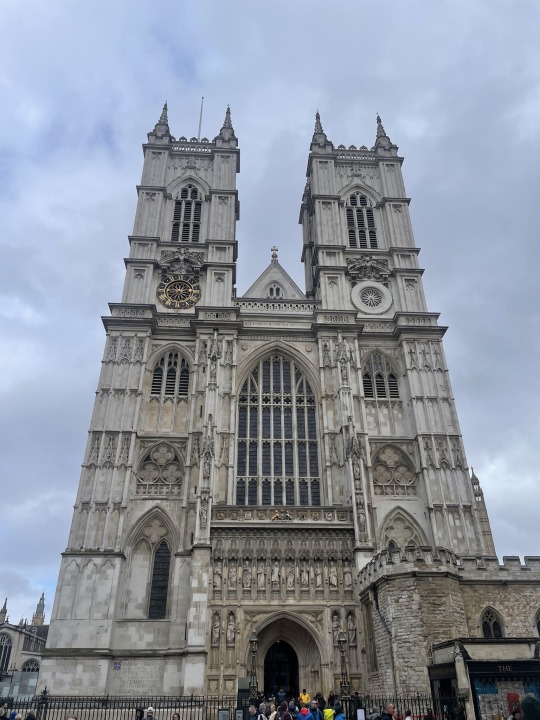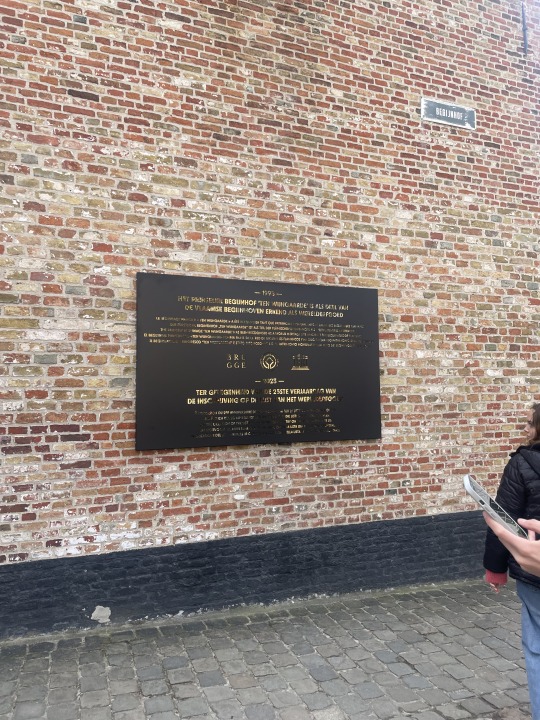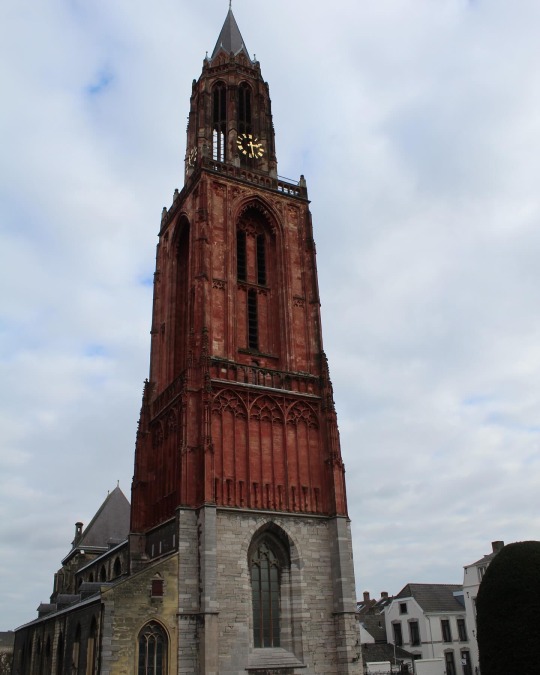Text

Westminster Abbey
Westminster Abbey is an Anglican Church that used to be known as The Collegiate Church of St. Peter at Westminster. I wrote about this place because we went on a group trip to London. Westminster Abbey is connected to the Reformation because London is the place of the start of the Anglican belief. King Henry VIII broke away from the Catholic Church and took control of the Catholic monasteries, which included Westminster Abbey. His act started the Reformation movement in England. My favorite fact about this place is that it is where the royal family of England gets married.
#church#europe#european#history#photography#reformation#travel#london#england#english#king henry viii
3 notes
·
View notes
Text

St. Paul's Cathedral
I wrote about this place because we went on a group trip to London. St. Paul's Cathedral is an Anglican Cathedral whose construction started around 1710. This cathedral is connected to the Reformation because the Anglican belief started in England. St. Paul's Cathedral became a place of debate for those who supported the Anglican Church and those who opposed it. An interesting fact about St. Paul's Cathedral is that it was built on a hill so it is the tallest point in England.
3 notes
·
View notes
Text



The Beguinage in Bruge, Belgium.
I chose to write about this place because it was a part of a group trip to Bruges. This place was founded by Margaret of Constantinople in 1244 as an independent parish. Pious women have already lived there and still live there today. This Beguinage and other beguinages around Europe were connected to the Reformation movement because they didn't follow the strict rules of the Catholic church. In fact, the Catholic church leaders were so agitated at this women's movement that they classified some of them as heretics. Interestingly, this Beguinage still follows many of the same rules as they did in the 13th and 14th centuries. Specifically, the gates close every night, and no one is allowed in or out until they open again.
3 notes
·
View notes
Text


Basilica of St. Servatius/Church of St. John
The first picture is of the Basilica of St. Servatius in Maastricht, Netherlands. I documented this building because we took a group trip to Maastricht. Built around 570 on the grave of St. Servatius, this building is still used as a Catholic church. This building has ties to the Reformation movement because of the Pilgrimage that happened and the influence that Charlemagne had on the church.
The second picture is the Church of St. John in Maastricht, Netherlands, next to St. Servatius's Basilica. Built around 1200, this church was one of the four parish churches built in the Middle Ages. Now a Dutch Reformed Church, this church used to be Protestant after Frederik Hendrik conquered Maastricht. The Basilica of St. Servatius remained Catholic and relations between the two church were not always stable.
The two very different styles of the church tell of the different periods they were built. The Basilica of St. Servatius is Romanesque. It was styled after the Roman Basilicas, or law buildings, which were meant to house lots of people. The Church of St. John is Gothic, which, was common during the Middle Ages. The pointed arches, flying buttresses, and sheer height of the building show the Gothic style of architecture. It is interesting how different these buildings are, but they share a similar history.
#europe#photography#european#reformation#travel#maastricht#netherlands#church#basilica#architecture#photographers on tumblr#history#art#art history
20 notes
·
View notes
Text

Aix-la-Chapelle Cathedral (Aachen Cathedral)
The Aix-la-Chapelle Cathedral is located in Aachen, Germany. I chose this site because it was beautiful and our first trip this semester.
This specific Cathedral is connected to the European Reformation because Charlemagne, the first Holy Roman Emperor, ordered it to be built. Charlemagne was buried in this Cathedral, and then 31 kings and 12 queens were coronated in this Cathedral, where it remains the Mother Church of the Diocese of Aachen.
One thing that surprised me about Aix-la-Chappelle Cathedral was the Ancient Roman ruins that remain under the city, and how you can see some of them when you walk in the Cathedral.
4 notes
·
View notes
Text

Aix-la-Chapelle Cathedral (Aachen Cathedral)
The Aix-la-Chapelle Cathedral is located in Aachen, Germany. I chose this site because it was beautiful and our first trip this semester.
This specific Cathedral is connected to the European Reformation because Charlemagne, the first Holy Roman Emperor, ordered it to be built. Charlemagne was buried in this Cathedral, and then 31 kings and 12 queens were coronated in this Cathedral, where it remains the Mother Church of the Diocese of Aachen.
One thing that surprised me about Aix-la-Chappelle Cathedral was the Ancient Roman ruins that remain under the city, and how you can see some of them when you walk in the Cathedral.
4 notes
·
View notes